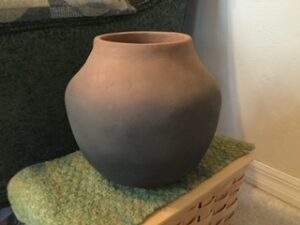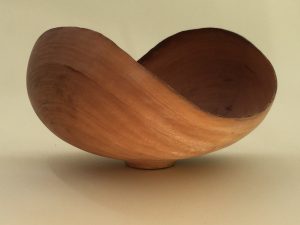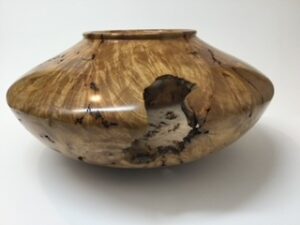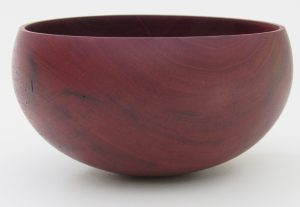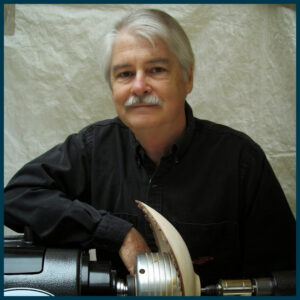
My first experiences in woodturning were in Industrial Arts shop classes in the 1960’s. After experiencing many aspects of woodworking, I developed a serious interest in woodturning in 1999. Since then, like many of you, I have invested a lot of time and money seeking professional instruction and acquiring tools and equipment. I have spent more than six months as a student or faculty assistant at craft schools, in addition to continually attending international and regional symposia. I am an active member of the American Association of Woodturners (AAW) and am a local Chapter member.
In 2016, AAW published my article: “Tuning Up a Bench Grinder” (American Woodturner, December, Vol 31, no 6, pp 24-27).
I feel fortunate to have worked with many of the most respected turners in the field and sincerely appreciate all they have shared with me. Thus, I enjoy sharing what I have learned through a variety of platforms. This includes teaching, performing demonstrations, leading hands-on workshops, judging art exhibits, writing technical assistance articles, and producing instructional videos.
I always endeavor to produce lathe-turned pieces with pleasing form, aesthetics, and balance. Fully understanding the functions of my tools and accurately shaping and sharpening them with repeatable results is critical to my success.
I always learn something from each encounter with other turners. I hope I can explore woodturning knowledge and ideas with you.
Demonstrations:
All Don’s demos will be in Room “F”
ROTATION 2
Side-Ground Bowl Gouge: A tutorial
Frequent use of a tool makes it second nature. Using it optimally both improves results and opens possibilities in your projects. This demonstration will present numerous uses for a side-ground bowl gouge on face-grain blanks.
The tools used are:
- 60° single bevel Irish/Ellsworth style side-ground gouge
- 70° micro-bevel with a 50° secondary relief bevel
- A detail spindle gouge with a convex bevel
A variety of applications presented are:
Outside: roughing, shaping and final finishing
Inside: roughing, and the elusive and often feared inside finishing cut
The detail spindle gouge will be used to refine the chuck tenon and to create a concave foot.
A bowl from green wood will be turned in this demonstration.
ROTATION 5
Form and Foot
The difference between good and great can be infinitesimal. In golf, victory is often determined by a single stroke. In woodturning, it can be a minor flaw in the intended curve, or a form that does not achieve its fullest potential (example: a disproportionally large foot, that interrupts the outside curve). The focus of this demonstration is to broaden understanding of how to design and create pleasing forms and not let your chuck or faceplate dictate or limit your result.
A bowl from green wood will be turned in this demonstration.
ROTATION 7
Fine Details of a Well-Executed Natural Edge Bowl Unveiled
Features I strive for in a natural edge bowl are:
- consistent wall thickness
- valleys of equal height
- wings of equal height
- grain centered so it radiates out evenly from the center of the bowl to the edge
- an uninterrupted curve from the rim through the foot, above the table, and back up
A successful natural edge bowl with these features begins when choosing a blank from a log. In this demonstration, I’ll explain the process I go through when selecting a log, and marking, and preparing the blank, prior to mounting on the lathe.
Also discussed will be the procedure I use when positioning the blank on the lathe between centers, a method to center the grain, as well as positioning the apex and valleys of the wings, thus rendering the natural edges aligned and equal in height.
A bowl from green wood will be turned in this demonstration.
ROTATION 10
Sharpening Skills for Woodturners
To successfully turn wood, shaping and sharpening your tools is of paramount importance. The sharpening of a myriad of tools including, but not limited to bowl gouges, spindle gouges, skews scrapers (classic and negative rake), and hollowing tools will be discussed and presented. How to attain accurate and repeatable results, saving time and excessive wear on your tools will be emphasized.
Examples of each tool will be available for viewing.
Several jigs, both homemade and commercially available, will be demonstrated.

